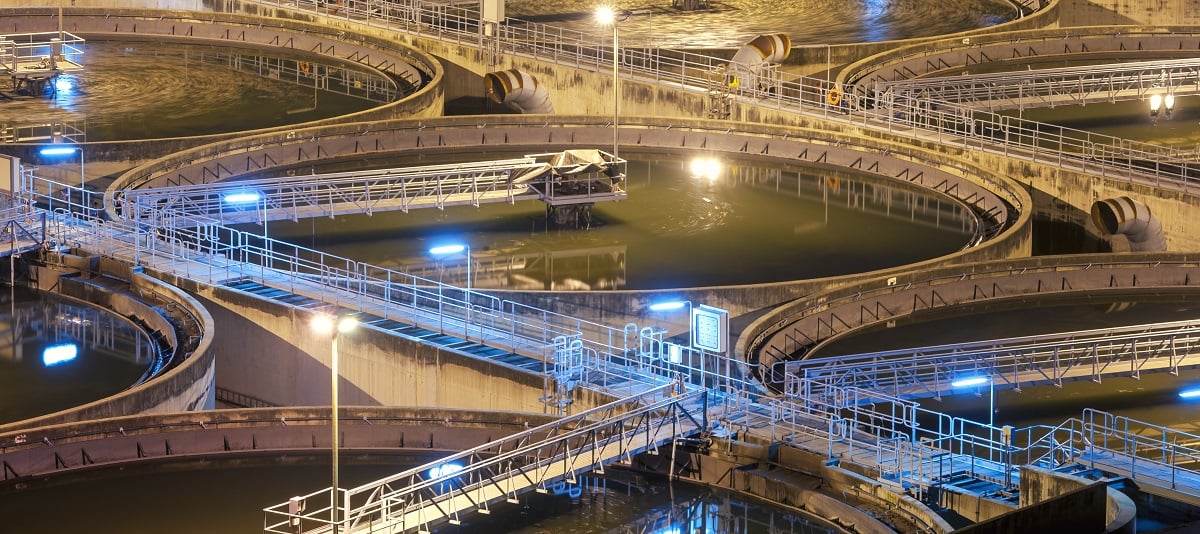
The UAE has one of the highest levels of water consumption per capita in the world (360-400 litres per day), whilst also having a dearth of readily available freshwater. Despite this, only 5% of water used in the country is treated waste water, with the primary sources instead being groundwater and desalinated seawater. However desalination is an expensive process and current reliance on groundwater is clearly unsustainable in the long-term.
Water supply is handled at a municipality (DEWA) level, with Abu Dhabi in particular recognising the need for change. The capital has declared its intention to reuse all waste water by 2020, with the launch of three new projects in this area. Currently, Abu Dhabi reuses only 5% of the 460,000 cubic metres of waste water that they annually generate.
Waste water itself can be generated from several sources, such as domestic waste water (sewage), agricultural run-off and industrial waste (as a by-product of manufacturing). Waste water from each of these sources poses different characteristics and challenges, including the types of toxic chemicals present.
It should also be stressed that the intended use of the treated water is also relevant to the process and cost. Producing water that is fit to be used for cleaning or similar functions is not lesser tedious process than producing potable water. Currently, in the UAE, treated water is primarily produced for irrigation purposes. However, there is still a tendency in the country for tap water to be used, even at scale, due to its low cost & psychological reason. This presents a challenge, but as mentioned above, it is generally recognised that using treated waste water for these use cases is a more sustainable solution for the future generations and that this is likely to be more prominent way to moving forward.
The Water Treatment Process
Wastewater treatment is broadly divided into Primary, Secondary and Tertiary stages and is preceded by collection of the water and in many cases, odour treatment.
Collection
This is the first step in the treatment process, whereby domestic wastewater is drained and flows through to a sewage treatment plant (like one of the 15 operated by Imdaad). Industrial wastewater is collected separately and dispersed to dedicated & state of art industrial waste water treatment plants (viz IWWTP of 600 m3/day capacity aka Industrial wastewater treatment plant recently commissioned & operated by Imdaad).
Odour Control
Prior to commencing the main water treatment process, many plants treat the odour emanating from the collected wastewater. This is usually done through one of two types of technologies:
- Vapor-phase– to reduce or eliminate odorous compounds that have been released into the air; and
- Liquid-phase technologies - to reduce or eliminate odorous compounds in the wastewater.
Primary
This is where the physical removal of settled / floating materials occurs, which assists prevent equipment blockages as well as acting as an initial screen.
Secondary
At this stage, suspended and dissolved biological matter is removed, often through the use of microorganisms which are subsequently removed themselves. These microorganisms lead to the decomposition of the biological matter.
Following the secondary stage, there is a residue of bio-solids which is also referred to as sludge. This sludge is filtered out and then separately treated.
Tertiary
The primary goal of the tertiary stage is to make sure that the final effluent is able to be released without damaging the ecosystem.
The tertiary stage often includes the removal of fine colloidal matters and is concluded by disinfecting the effluent prior to discharge. This process is sometimes called effluent polishing & disinfection.
Sludge Treatment
The sludge thus produced after the secondary stage requires to be treated and disposed of. Treatment usually follows a process of thickening, digestion (using enzymes) and dewatering (drying) by hi-tech ultra-control centrifuges.
Following the treatment process, it can be spread onto agricultural land to act as a fertiliser (although not on land used to grow crops for humans). Alternatively, sludge is sometimes carted & disposed in landfills or incinerated.

